ISKCON & Raganuga Bhakti part 1
Mahanidhi Madan Gopal Das
Due to unclear verse translations and purports in Srila Prabhupada’s books like “Nectar of Devotion” and “Sri Chaitanya-caritamrita”, many ISKCON members misunderstand and misrepresent the authorized practice of raganuga-bhakti sadhana.
This post will cite these confusing translations and purports, and give clear explanations of the subject of raganuga-bhakti.
WHAT IS RAGATMIKA AND WHAT IS RAGANUGA?
In order to have a clear understanding about raganuga it is important to understand raga and ragatmika. For various reasons these terms have been somewhat conflated and confused in ISKCON.
Bhakti-rasamrita-sindhu (1.2.272) says:
“Raga is complete absorption in one’s beloved ishta-devata. Bhakti that is impelled exclusively by such a thirst is called ragatmika-bhakti.”
“The absorption described above as ragatmika bhakti is only found in Krishna’s eternal associates in Vraja. Raganuga-bhakti is defined as that bhakti which follows after the ragatmika-bhakti which manifests distinctively in the inhabitants of Vraja. (Bhakti-rasamrita-sindhu 1.2.270)
Here are of some of the unclear translations in Nectar of Devotion Ch. 15, entitled “Spontaneous Devotional Service” that have led to much confusion:
“The examples of spontaneous devotional service can be easily seen in Krishna’s direct associates in Vrindavan. The spontaneous dealings of the residents of Vrindavan in relationship with Krishna are called raganuga.”
CLARIFICATION: The proper term here should be ragatmika, rather than raganuga.
In the next paragraph Srila Prabhupada says, “Srila Rupa Goswami has defined raganuga bhakti as spontaneous attraction for something while completely absorbed in thoughts of it.”
CLARIFICATION: The word here should be raga, not raganuga bhakti.
The terms ragatmika and raganuga have been translated identically and even used interchangeably in Srila Prabhupada’s books.
Thus, it is not surprising that most ISKCON devotees mistakenly think that raganuga-bhakti sadhana is a highly elevated stage of bhakti which is only achieved in a completely purified stage.
DISCREPANCIES BETWEEN Srila Prabhupada’s ‘NECTAR OF DEVOTION’ AND THE TEACHINGS OF THE PREVIOUS ACARYAS:
Srila Prabhupada gives his own definition of rasa in the preface of the Nectar of Devotion: “That force which drives the philanthropist, the householder and the nationalist is called rasa.”
Clarification: This definition of rasa has nothing to do with what Sri Rupa Goswamipada says in Bhakti-rasamrita-sindhu. He says rasa is produced by combining a sthayi bhava, then vibhava, anubhava, sancari bhava and sattvik-bhava.
QUALIFICATION FOR RAGANUGA-BHAKTI
Raganuga bhakti means allegiance to the eternally perfect ragatmika-devotees of Vraja. This is the teaching of Sri Rupa Goswamipada in Bhakti-rasamrita-sindhu (1.2.271-272):
“Before we speak of ragatmika bhakti and raganuga bhakti we must first know what is raga. Raga is that deep natural loving thirst which causes one to become completely absorbed in one’s beloved Thakurji.”
Sri Jiva Goswamipada has defined raga and raganuga as follows (Bhakti Sandarbha 310): Raga means the strong and natural desire of a sense-enjoyer for his beloved sense-objects. The senses, like the eyes, are naturally attracted to their objects, such as beautiful forms, and they need no encouragement in this.
In the same way, when a devotee’s heart is naturally attracted to Sri Krishna and one has a deep thirst for Sri Krishna then this is called raga.
When a mere ray of the nectar-moon of such raga falls on the crystal-like hearts of those devotees who only have some taste for a particular raga but do not possess that raga itself yet, then the heart rejoices and as a result of hearing from the scriptures and saints taste will be born within the heart of such a devotee for the devotional expertise of a ragatmika bhakta.
This means that ruci (taste) will be born within the heart when we hear about the loving devotional expertise of a ragatmika Vraja-bhakta from the scriptures or from the mouth of a saint whose heart is pure, that is, free from lust, anger and envy. The devotion which follows the raga of a ragatmika Vraja-devotee along with ruci is called raganuga bhakti.”
Both the vaidhi-devotee and the raga-devotee may begin the path of devotion from the stage of anartha nivrtti, cessation of unwanted habits, progressing through the stages that have been described by Sri Rupa Goswamipada in Bhakti-rasamrita-sindhu (1.4.15-16) : adau –shraddha -tatha -sadhu -sango’tha –bhajana -kriya.
The difference between them lies not in personal purity, but in their mood. Sri Rupa Goswamipada writes in Bhakti-rasamrita-sindhu (1.2.291): “Those who are anxious (‘greedy’) to attain the mood of the eternal, exclusively fixed-up ragatmika Vrajavasis are eligible to enter into raganuga-bhakti.”
YOU CAN’T LEARN RAGA BHAKTI FROM BOOKS
One cannot learn vaidhi bhakti from the guru, and then just learn raganuga-bhakti from books because your guru did not teach you raganuga bhakti.
Sri Raghunatha Das Goswamipada says (Sva-sankalpaprakash-stotra 1): “How can one enter into the Shyam ocean without having conversed with a devotee whose heart is steeped in love for Radha [a raganuga-bhakta]?”
Visvanatha Cakravartipada writes in his Raga Vartma Candrika (1.6). “There are two causes for the appearance of sacred greed necessary to practice raganuga-bhakti: The mercy of Bhagavan Sri Krishna or the mercy of an anuragi devotee. There are again two kinds of mercy bestowed by a devotee: praktana and adhunika.
Praktana means mercy bestowed by a raganuga bhakta in a previous life, and adhunika is mercy bestowed in the present birth. The praktana-devotee takes shelter of the lotus feet of a raganuga guru after the sacred greed has arisen in him, the adhunika will get that sacred greed after surrendering to the feet of such a guru.”
[content courtesy Sri Advaita Dasji]
Raganuga-bhakti ki jai! Jai Jai Sri Radhe!

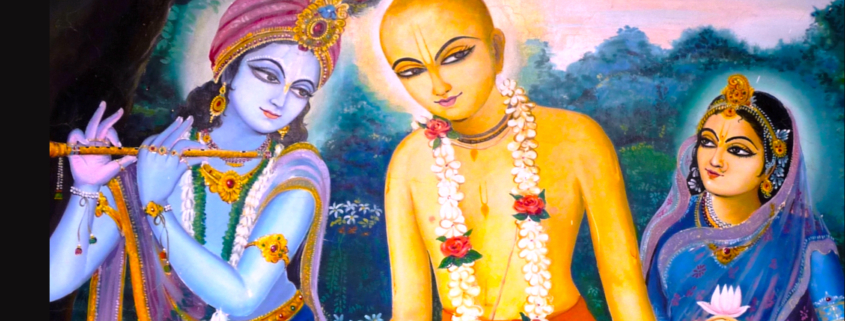


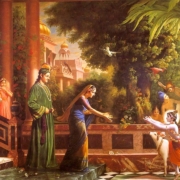

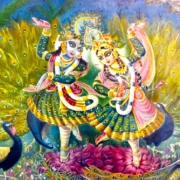
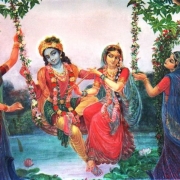
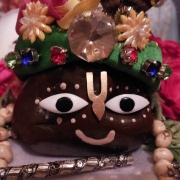


Leave a Reply
Want to join the discussion?Feel free to contribute!